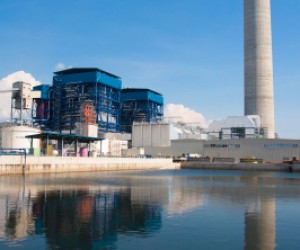The Wet Flue Gas Desulphurisation (WFGD) system being installed at Kusile Power Station by the Cosira Group/Alstom consortium, is the first of its kind in South Africa.
The WFGD will dramatically reduce the sulphur dioxide (SO2), content from the power plants flue gases. Sulphur dioxide (SO2) exists in flue gases as a result of burning fossil flues during power generation and is the foremost contributor towards acid rain.
While wet flue gas desulphurisation has been a popular choice for flue gas scrubbing on the international market, South Africa has chosen, until now, to utilise other methods of decreasing sulphur dioxide from gas emission.
"Although other methodologies exist to reduce (SO2) from flue gas emissions, advanced proven technology such as wet flue gas desulphurisation processes are adopted to improve on the limits set by international committees” says John da Silva, chief executive officer of the Cosira Group.
“WFGD has been a popular choice for fossil-fuelled power stations for over 25 years in Europe and the United States. The technology is set to become a standard in developing countries as awareness of its benefits increases.
There is no doubt that the WFGD is the preferred environmentally ‘friendly’ choice as it removes at minimum 95% of sulphur dioxide gases from the emissions” says Richard De Arruda, Cosira WFGD project director.
“The COP 17 conference pinpointed a number of critical issues that need to be addressed to ensure compliancy to the committee. In many instances project funding is attached to compliance to insure that climate changing emissions are kept to the acceptable levels as prescribed by the committees” De Arruda adds.
“Sophisticated sensors interconnected with the WFGD Plants control systems continually record fuel gas emissions.These sensors provide the control systems with accurate monitoring information necessary to ensure that emissions are kept to the performance levels of the plant.
"Should emissions exceed the acceptable levels; alarms will trigger control mechanisms which adjust the plants’ inputs to correct the levels.” De Arruda explains.
“We are proud to be a part of the precedent-setting initiative at the Kusile Power Station in terms of reducing greenhouse gases and improving South Africa’s carbon footprint. This project clearly mirrors the Cosira Group’s own proactive approach towards creating a sustainable environment.
"We are confident that its success will open the doors for upgrading other industries in addition to power generation in the future,” Da Silva concludes.










